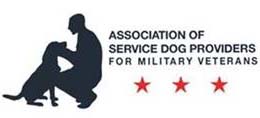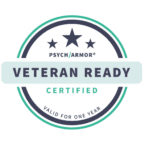In times of uncertainty, we look to each other for courage and hope. We look for the helpers. And I can tell with a fair amount of certainty that we are surrounded by helpers. Our medical community, our first responders, truck drivers and grocery store workers. Local businesses and community members working to help each other, even when they themselves are worried. Worried about the future. Worried about their friends and loved ones. When you think about nonprofits, they are essentially the definition of the helpers. The ones that commit to forgoing a profit to support the greater good. And they are usually the hardest hit during times of difficulty. But they are the ones we need the most.
As I write this, I am worried about the future. I am worried about the veterans we have promised to help. The ones we promised we’d be here for, no matter what. A promise we plan to keep. And right now, we are trying to figure out how to do just that. One of the biggest challenges veterans with hidden injuries is loneliness and depression: “research has indicated that veterans can experience loneliness and social isolation differently to the general population based on their experiences during military services.” Furthermore, “older veterans, veterans with functional limitations and those who had experienced traumatic events were the most at risk. With almost all ex-service personnel experiencing some difficulty in making the transition back into civilian life following their military service.” You are probably seeing where I’m going with this. The very people that are in the higher risk categories for COVID-19 are also the same group that needs to have meaningful social connections now more than ever.
Our program is about more than providing a companion or service dog. It is often said that the journey is greater than the destination. And that couldn’t hold truer for what we do. Everything we do is by design, from the class size and makeup to the curriculum to the placement of chairs in the training center. By week three of training, veterans start looking forward to coming to class each week. They form bonds with their classmates and bullshit with each other and compete with each other (all in good fun). Even when they are technically done with training, some keep coming. They claim an hour here working with their dog is more therapeutic than an hour on a couch. And that is the purpose and premise. That’s our goal. Get them out of the house, back into society, and back to enjoying life.
Montana provides unique opportunities; it also presents some unique challenges. Technology is a great tool, but not all of our veterans are technologically savvy. In some areas, we have limited to no internet service, therefore, finding alternative ways to assist our teams becomes even more challenging. So how do we encourage connectiveness during a time when we are told to stay home? How do we ensure we are here for our teams during a time that they may need us now more than ever? These are questions without easy answers. But we will take it one day at a time, and we will persevere.
To all the helpers out there: Thank you. Thank you for always answering the call. Thank you for always giving the world hope and someone to look to.
Read more about veteran loneliness and social isolation here: https://www.openaccessgovernment.org/veterans-experiencing-loneliness-and-isolation/55738/




